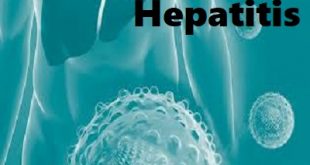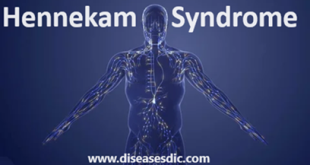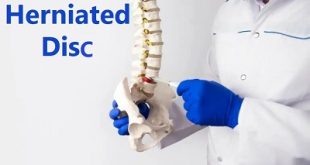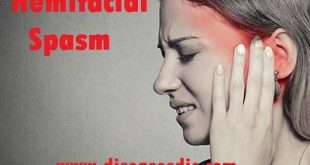Introduction
Hookworm disease is a parasitic disease caused by the entry of larvae (immature form) of the hookworm, most commonly, Necator americanus, into a human host. People usually get hookworm disease by walking barefoot in soil that is contaminated with the feces of an infected person.

Transmission
You can get hookworms by walking barefoot over contaminated soil. In penetrating your skin, the hookworm larvae (immature worms) may cause an allergic reaction. It is from the itchy patch at the place where the larvae entered your body that the early infection came to be known as “ground itch.”
Once larvae have broken through your skin, they enter your bloodstream and are carried to your lungs. Unlike ascarids, another form of parasitic roundworm, hookworms do not usually cause pneumonia.
The larvae migrate from your lungs to your windpipe and are then swallowed and carried back down to your small intestine.
Phases of Hookworm
There are three pathological phases to hookworm infections:
Cutaneous or invasive phase: When larvae initially penetrate the skin they can cause irritation and itching and if they fail to locate a blood capillary they can wander through the skin causing a condition known as cutaneous larval migrans, leaving a track visualized under the skin by the presence of the host inflammatory reaction.
Pulmonary phase: This occurs during the period when the larvae are bursting out of the capillaries in the lungs into the alveolar spaces. This causes local hemorrhaging at the site. This is rarely symptomatic, except when there is a heavy infection, when it can result in pneumonitis, and can also cause a cough and a sore throat.
Intestinal phase: Adult worms are usually restricted to the anterior third of the small intestine, but where infections are very heavy they can occupy the whole length of the small intestine. The worms clamp onto the mucosa abrading the surface and sucking the blood. Proteolytic enzymes from the dorsal pharyngeal gland are released into the buccal cavity which aid in digestion.
Historical information
Documentation of hookworm dates as early as the third-century B.C. when the authors of the Hippocratic Corpus referred to a disease characterized by intestinal distress, a yellow-green complexion, and a tendency to eat dirt.
The first definitive observations of hookworm, however, were not made until 1838 when Angelo Dubini discovered hookworm during an autopsy. Dubini was responsible for naming the parasite Ancylostoma duodenale and also described the hookworm’s teeth in great detail. Reports of hookworm then began to increase throughout the world, first in Egypt in 1846 and then in Brazil in 1865. By 1878, Giovanni B. Grassi and his colleagues had announced a method of diagnosis via microscopic examination of the feces for hookworm eggs.
In 1880, Edoardo Perroncito first noted the correlation between hookworms and anemia among miners digging the St. Gottard tunnel in the Alps. Soon thereafter in 1881, the first antihelminthic drug, Thymol, was developed and used as the drug of choice until the 1920’s. In 1898, Arthur Looss determined the life cycle of hookworm while Charles W. Stiles identified Necator americanus as another species of hookworm that infected humans.
It was Stiles who convinced the Rockefeller Foundation to initiate its $1 million campaign against hookworm in the United States using treatment, education, and latrine-building programs. Although the campaign was unsuccessful in eliminating hookworm from the United States, the campaign has become a significant model in the history of hookworm elimination for its goal and size.
Epidemiology
Human infection with A. duodenale or N. americanus is estimated to affect approximately 439 million people worldwide. These parasites drain the equivalent of all the blood from approximately 1.5 million people every day.
Infection is most prevalent in tropical and subtropical zones, roughly between the latitudes of 45°N and 30°S; in some communities, prevalence may be as high as 90%. The disease flourishes in rural communities with moist shaded soil and inadequate latrines.
In 2010, it was estimated that 117 million individuals in sub-Saharan Africa were infected with hookworms, as well as 64 million in East Asia, 140 million in South Asia, 77 million in Southeast Asia, 30 million in Latin America and the Caribbean, 10 million in Oceania, and 4.6 million in the Middle East and North Africa. Oceania has the highest prevalence (49%), followed by sub-Saharan Africa (13%), Southeast Asia (12.6%), South Asia (8.6%), East Asia (5%), and Latin America/Caribbean (5%). (ref16). These represent approximately 20% decreases in prevalence from 2005 WHO estimates.
Causes
- The parasitic roundworm, known as hookworm, causes hookworm disease. Necator americanus is the most common type of hookworm that causes infection in the United States.
- Hookworm eggs are passed in human feces onto the ground where they develop into infective larvae (immature worms).
- When the soil is cool, the larvae crawl to the nearest moist area and extend their bodies into the air.
- The larvae stay in the soil—waving their bodies to and fro—until they come into contact with human skin, usually when stepped on by a bare foot, or until they are driven back into the ground by the heat.
What are the risk factors for hookworm disease?
A number of factors increase the risk of developing hookworm disease. Not all people with risk factors will get hookworm disease. Risk factors for hookworm disease include:
- Contact with contaminated soil or sand, especially when walking barefoot

- Residence or travel in an area with poor sanitation, where human fecal matter may contaminate the soil
- People who live in warm, tropical, or subtropical areas
- People exposed to poor sanitation management and hygiene, especially if walking barefoot or with skin-to-soil contact
- Women who are pregnant and those who are of childbearing age
- Young children who are exposed to contaminated soil or sandboxes
- People who have contact with contaminated soil, especially farmers, plumbers, electricians, and exterminators
- People who sunbathe on contaminated sand
What are the symptoms of hookworm disease?
In most cases, you will not experience symptoms if you have a hookworm infestation in the intestines. However, as the hookworm larvae mature in the intestines, gastrointestinal symptoms, such as diarrhea, nausea and vomiting, may sometimes occur. Some people experience itching, swelling or redness of the skin where the larvae entered the body. Coughing and respiratory symptoms may result from the presence of hookworm larvae in the lungs.
Common gastrointestinal symptoms of hookworm disease
Hookworm disease may cause gastrointestinal symptoms including:
- Abdominal pain or cramping (often worse after eating)
- Bloody stool (the blood may be red, black, or tarry in texture)
- Diarrhea
- Flatulence
- Gas
- Loss of appetite
- Nausea with or without vomiting
Other symptoms of hookworm disease
Hookworm disease can sometimes cause symptoms in other body systems. Examples include:
- Blood-tinged sputum
- Cough
- Fatigue
- Fever
- Itchy rash

- Pale skin or pallor
Symptoms that might indicate a serious condition
In some cases, hookworm disease can be a serious condition that should be immediately evaluated in an emergency setting. Serious symptoms including:
- Nausea, vomiting and diarrhea, which can lead to dehydration, potentially requiring intravenous fluids
- Symptoms of anemia such as shortness of breath, lightheadedness, and fatigue, which can be due to blood loss from the hookworm attaching itself to the intestine; pregnant women, the elderly, and those in poor health are susceptible
Possible Complications
Treatment of hookworm disease usually results in full recovery; complications are rare unless the infection is left untreated. However, if anemia occurs, it can be severe in people who have chronic disease or poor nutrition, are pregnant, or are in poor health.
Health problems that may result from hookworm infection include:
- Iron deficiency anemia, caused by loss of blood
- Nutritional deficiencies
- Severe protein loss with fluid buildup in the abdomen (ascites)
- Heart failure and widespread tissue swelling secondary to severe anemia
- Physical and thought development problems in children due to severe anemia
- Breathing complications such as wheezing and cough
Diagnosis of hookworm disease
- Examination of a stool sample
- Blood tests to check for anemia and nutritional deficiencies
- Hookworm infection diagnosis is made by identifying hookworm eggs in a sample of stool. Stool should be examined within several hours after defecation.
- Blood tests for anemia and nutritional deficiencies, particularly iron, are also done.
- Specific diagnosis with PCR (polymerase chain reaction) can be employed to confirm hook worm infection.
- Rarely, endoscopy is done that would reveal the presence of adult worms in the intestine. This is done for the purpose of identification of the species that has infected the person.
- Chest X- ray is done to check lung involvement in hookworm infection.
How do you treat hookworm disease?
Treatment of hookworm infection involves the following:
Cure the infection
- Drugs like mebendazole are currently used to destroy the adult hookworms in the intestine and albendazole is effective in treating the disease while the worm is in the intestine or in the skin.
- Other antihelminthic drugs include levamisole and pyrantel pamoate.
- Medicines prescribed for pregnant and lactating women would differ according to the sensitivity of the drug and severity of the infection.
- Thiabendazole is applied topically to destroy the larvae in the skin. Local cryotherapy is used to destroy the hookworms while the parasite is still in the skin, causing itching and rashes.
- Two weeks after completion of the treatment, stool examination should be repeated.
- Mebendazole is one of the three most common hookworm medications prescribed today. It’s commercial brand name is Vermox, and it may be administered in one of two ways. Vermox may be taken as a one time dose of 500mg or taken as 100mg twice a day for three days. If hookworm isn’t gone in 3-4 weeks, a second dose may be required. Mebendazole is usually administered only to humans.
- Albendazole is the second most common hookworm treatment prescribed by physicians these days. Its commercial brand name is Albenza, but the generic formulas are becoming more commonly prescribed at a reduced cost. It is usually taken as a 400mg dose only once, but for children it is often taken in 200mg doses for three days and then repeated after three weeks to ensure that the hookworm infection is absolutely cured.
- Pyrantel pamoate is used in both humans and pets, and is regarded by veterinarians as one of the most effective de-wormers on the market. Its commercial brand name is Antiminth or Pin-X (which you can get at Amazon). It is also used to cure pinworms. For human patients, the recommended dose is 11mg once a day for three days. For pets (dogs and cats), one dose a week repeated over the course of three weeks should be a sufficient treatment to interrupt the lifecycle and return your pet’s health to normal.
Treatment of anemia and its complications
- Anemia must be treated immediately with iron supplements, accompanied by vitamin C.
- Folic acid and vitamin B12 supplements are also recommended.
Improve nutrition for the patient
Hookworm grows in the intestine and absorbs nutrients for its growth. This in turn affects the human host harboring the worm and develops deficiency of nutrients. There may be a rapid weight loss and deterioration in the health.
Diet for a patient with hookworm infection must include the following components.
- Iron
- Protein
- Fiber
- Vitamin C
- Folic acid
- Vitamin B12
How can hookworm disease be prevented?
You can lower your risk of becoming infected with hookworms by:
- Wearing shoes when you walk outdoors, especially in areas that might have feces in the soil
- Drinking safe water
- Properly cleaning and cooking food
- Practicing proper handwashing
- Using a barrier to prevent the skin from touching the soil when sitting on the ground
- Avoiding consuming soil that may be contaminated with hookworm
- Not passing stool in the soil or outdoors
- Not using fertilizer made from human feces
- Covering children’s sandboxes
- Taking safety precautions like wearing gloves and shoes when gardening
- Covering moist soil requiring frequent contact with a waterproof liner
- Treating pet dogs and cats for hookworm
In areas where hookworm infections are common, improving sanitation can reduce the number of infections. This includes using better sewage disposal systems and reducing human defecation that occurs outdoors.
 Diseases Treatments Dictionary This is complete solution to read all diseases treatments Which covers Prevention, Causes, Symptoms, Medical Terms, Drugs, Prescription, Natural Remedies with cures and Treatments. Most of the common diseases were listed in names, split with categories.
Diseases Treatments Dictionary This is complete solution to read all diseases treatments Which covers Prevention, Causes, Symptoms, Medical Terms, Drugs, Prescription, Natural Remedies with cures and Treatments. Most of the common diseases were listed in names, split with categories.









tell us the prescription of the medication.
Mebendazole is one of the three most common hookworm medications prescribed today. It’s commercial brand name is Vermox, and it may be administered in one of two ways. Vermox may be taken as a one time dose of 500mg or taken as 100mg twice a day for three days. If hookworm isn’t gone in 3-4 weeks, a second dose may be required. Mebendazole is usually administered only to humans.
Albendazole is the second most common hookworm treatment prescribed by physicians these days. Its commercial brand name is Albenza, but the generic formulas are becoming more commonly prescribed at a reduced cost. It is usually taken as a 400mg dose only once, but for children it is often taken in 200mg doses for three days and then repeated after three weeks to ensure that the hookworm infection is absolutely cured.
Pyrantel pamoate is used in both humans and pets, and is regarded by veterinarians as one of the most effective de-wormers on the market. Its commercial brand name is Antiminth or Pin-X (which you can get at Amazon). It is also used to cure pinworms. For human patients, the recommended dose is 11mg once a day for three days. For pets (dogs and cats), one dose a week repeated over the course of three weeks should be a sufficient treatment to interrupt the lifecycle and return your pet’s health to normal.
detailed explanations for the causes initio ,develop crapping into bodies , symptoms, medical remedies and treatments.
useful, helpful information.
thanks with regards.
very helpful
very helping and educating topics, please keep it up!
my child is going to cr and she got a hookworm in her lbm but i dont know what should i do.
Consult with a doctor immediately to avoid the proliferation of the worm into the whole body.
If hookworms are mature in the intestine how long are those worms life cycle and then happened to death to the host..?
Once it gets into the host gut, Necator tends to cause a prolonged infection, generally, 1–5 years (many worms die within a year or two of infecting), though some adult worms have been recorded to live for 15 years or more.
can these worm live in, and affect the liver?
parasites that invade the liver is “fluke”. This is a worm-like organism that we can pick up from eating meats, and sometimes if we let dogs or other animals lick us on the mouth we can get worms, flukes,
Please i have go to physician and explain to him my problem and he said is worm and gave me some medicine but still after taking the medicine although i had a little relief but still found it difficult in passing faeces out what should i do please
Please consult a doctor.
Very helpful.I have migrane sometimes i get headache what should i do???
please consult a doctor.
Good job
what are the species of hookworm?
The two most common types of hookworm that infect humans are Ancylostoma duodenale, and Necator americanus.
this is the best app ever.you can avoid desease by turning reading the different kinds of desease.so if have that you can look and find what desease you have and you can avoid those risk factors accurs to you.cause you know now how to prevented it.
please help me can this warm cause half coughing please let me know how it goes to treat
Intestinal worms do cause coughing. Worms like roundworm, hookworm, and lung fluke are ingested via the mouth due to poor hygiene and Their presence in the lungs can cause cough.